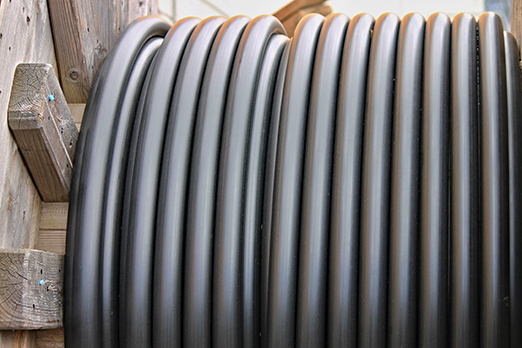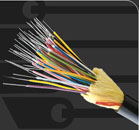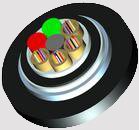PRODUCTS
- Aerial Bundled Cables
- Airport Cables
- Automotive Cables
- Alarm & Audio & Electronic Cables
- Belden Equivalent Cables
- Bus Cables
- Cable Glands
- Cables for Oil Industry
- Coaxial Cables
- Composite Cables
- Control Cables
- Data Cable
- Elevator Cables
- Fiber Optic Cables
- Fire Resisting Cable(Fireflix)
- Fire Retardant Cable(FIRETOX)
- Flame Retardant Cable (FIREGUARD)
- Flexible Cables
- Heat Detection Cables
- High Temperature Cables
- Highway Cables
- Industrial Cables
- Instrumentation Cables
- Lan Cables
- Marine Cable
- NEK606 Water Blocked Offshore & Marine Cables
- IEC60092 STANDARD Offshore & Marine Cables
- BS 6883&BS7917 STANDARD Offshore & Marine Cables
- UKOOA Offshore & Marine cables
- VG 95218 Navy Cables
- Mining Cables
- Airframe Wire
- Marine, OIL,GAS & Petrochemical Cables
- Power Cables
- Railway Cables
- Robotics
- Rolling Stock Cables
- Rubber & Crane Cables
- Security Cables
- Special Cables
- Spiral Cables
- Telephone Cables
- Thermocouple Cables
- BS 5308 Cable
- PAS 5308 Cable
- BS 5467 Cable
- BS 6724 Cable
- BS 6346 Cable
- BS 7211 Cable
- IEC 60502-1 Cable
HOT PRODUCTS
APPLICATIONS
|
FAQ
-
- QProcessing Pain Points & Solutions for LSZH Cable Compounds?
-
- AAs we know that a large amount of flame retardant fillers were used in low smoke halogen-free cable compounds, which result in a series of processing problems, in recent years silicone masterbatch was widely used in low smoke halogen free cable compounds to solve those processing problems.
Silicone masterbatch is a kind of functional masterbatch with various thermoplastic as carrier and polysiloxane as the function parts. On the one hand, silicone masterbatch can improve the flow ability of a thermoplastic system during the molten state, better the dispersion of fillers, reduce the energy consumption of extrusion and injection molding and improve the production efficiency. On the other hand, it can also improve the surface smoothness of the final plastic products, reduce the surface friction coefficient and improve the wear and scratch resistance.
- AAs we know that a large amount of flame retardant fillers were used in low smoke halogen-free cable compounds, which result in a series of processing problems, in recent years silicone masterbatch was widely used in low smoke halogen free cable compounds to solve those processing problems.
-
- QWhat are the various electrical cable types and what dictates their construction?
-
- ATypically, voltage rating categories for cable types include the following:
- Extra Low Voltage for supplies below 70V
- Low Voltage cables include voltages up to 1000V
- Medium Voltage Cables from 1000V to 35kV
- High Voltage cables from 35kV to 230kV
- Extra High Voltage above 230kV
The insulation layer is designed to withstand the electrical performance demands of the cable, so the choice of material type and thicknesses may vary. In some cases a higher voltage may require additional cable layers as determined by local specifications and national or international standards.
The materials used in cable construction are chosen for their electrical properties such as conductivity and insulation resistance. These materials and the precise construction may also influence reactance, impedance, capacitanceinductance values of the cables.
Lastly, both cost and appearance (such as colour coding for easy identification) can influence cable construction but of course, these factors should play a secondary role to that of safe application.
- ATypically, voltage rating categories for cable types include the following:
-
- QWhat are the benefits of PVC insulated cables?
-
- APVC (Polyvinyl chloride) is widely used in electrical cable construction for insulation, bedding and sheathing.PVC is cost-effective and also has excellent ageing properties and typically exceeds a 25 to 30 year service life.
It’s considered to be one of the most versatile of the common thermoplastics due to the fact that its properties can be easily modified - although PVC is inherently hard and rigid it is easily modified with plasticizers, stabilizers, lubricants and various other ingredients and fillers that aid processing and enhance various properties. It is also easy to process and recycle when used as a thermoplastic type.
Cable with a PVC insulation or sheathing is flame retardant, which is an important consideration for electric cables in most applications. PVC can be made resistant to a wide range of chemicals including oils, acids and alkalis, and is tough, durable and resistant to abrasion. The addition of various additives can improve its temperature range, typically from -40 to 105°C, as well as the resistance to sunlight, reduced smoke emission and improved water resistance.
- APVC (Polyvinyl chloride) is widely used in electrical cable construction for insulation, bedding and sheathing.PVC is cost-effective and also has excellent ageing properties and typically exceeds a 25 to 30 year service life.
-
- QHow are copper conductors made/processed?
-
- A- The ore mined from the ground is crushed and ground into powder.
- A process called froth flotation concentrates the ore, with waste materials sinking away from the now enriched ore.
- The enriched ore is heated to remove sulphur, leaving a material called calcine.
- The calcine is smelted, removing more impurities and leaving a matte of liquid copper and iron sulphide.
- Air is blown into the matte, forming a material called blister copper.
- The blister copper is electrolysed, purifying the copper to around 99.99%.
An alternative process is called leaching, and involves treating copper ores with sulphuric acid, which dissolves the ore to form copper sulphate which is then electrolysed. This can be done instead of mining, and is much more environmentally friendly than mining
- A- The ore mined from the ground is crushed and ground into powder.






